In this work, we study Bloch wave homogenization of periodically heterogeneous media with fourth order singular perturbations. We recover different homogenization regimes depending on the relative strength of the singular perturbation and length scale of the periodic heterogeneity. The homogenized tensor is obtained in terms of the first Bloch eigenvalue. The higher Bloch modes do not contribute to the homogenization limit. The main difficulty is the presence of two parameters which requires us to obtain uniform bounds on the Bloch spectral data in various regimes of the parameter.
Citation: Vivek Tewary. Combined effects of homogenization and singular perturbations: A bloch wave approach[J]. Networks and Heterogeneous Media, 2021, 16(3): 427-458. doi: 10.3934/nhm.2021012
| [1] | Iñaki López, Teresa Cebriano, Pedro Hidalgo, Emilio Nogales, Javier Piqueras, Bianchi Méndez . The role of impurities in the shape, structure and physical properties of semiconducting oxide nanostructures grown by thermal evaporation. AIMS Materials Science, 2016, 3(2): 425-433. doi: 10.3934/matersci.2016.2.425 |
| [2] | Xuan Luc Le, Nguyen Dang Phu, Nguyen Xuan Duong . Enhancement of ferroelectricity in perovskite BaTiO3 epitaxial thin films by sulfurization. AIMS Materials Science, 2024, 11(4): 802-814. doi: 10.3934/matersci.2024039 |
| [3] | Alberto Debernardi . Ab initio calculation of band alignment of epitaxial La2O3 on Si(111) substrate. AIMS Materials Science, 2015, 2(3): 279-293. doi: 10.3934/matersci.2015.3.279 |
| [4] | Ahmed Z. Abdullah, Adawiya J. Haider, Allaa A. Jabbar . Pure TiO2/PSi and TiO2@Ag/PSi structures as controllable sensor for toxic gases. AIMS Materials Science, 2022, 9(4): 522-533. doi: 10.3934/matersci.2022031 |
| [5] | Johana Gamez, Luis Reyes-Osorio, Oscar Zapata, Roberto Cabriales, Luis Lopez, Miguel Delgado-Pamanes . Study of protective hard coatings of SiO2-TiO2 on aluminum substrates. AIMS Materials Science, 2024, 11(2): 200-215. doi: 10.3934/matersci.2024011 |
| [6] | Haridas D. Dhaygude, Surendra K. Shinde, Ninad B. Velhal, G.M. Lohar, Vijay J. Fulari . Synthesis and characterization of ZnO thin film by low cost modified SILAR technique. AIMS Materials Science, 2016, 3(2): 349-356. doi: 10.3934/matersci.2016.2.349 |
| [7] | Nur Jassriatul Aida binti Jamaludin, Shanmugan Subramani . Thermal performance of LED fixed on CVD processed ZnO thin film on Al substrates at various O2 gas flow rates. AIMS Materials Science, 2018, 5(2): 246-256. doi: 10.3934/matersci.2018.2.246 |
| [8] | Evangelos Karagiannis, Dimitra Papadaki, Margarita N. Assimakopoulos . Circular self-cleaning building materials and fabrics using dual doped TiO2 nanomaterials. AIMS Materials Science, 2022, 9(4): 534-553. doi: 10.3934/matersci.2022032 |
| [9] | Khang Duy Vu Nguyen, Khoa Dang Nguyen Vo . Magnetite nanoparticles-TiO2 nanoparticles-graphene oxide nanocomposite: Synthesis, characterization and photocatalytic degradation for Rhodamine-B dye. AIMS Materials Science, 2020, 7(3): 288-301. doi: 10.3934/matersci.2020.3.288 |
| [10] | Mihaela Girtan, Laura Hrostea, Mihaela Boclinca, Beatrice Negulescu . Study of oxide/metal/oxide thin films for transparent electronics and solar cells applications by spectroscopic ellipsometry. AIMS Materials Science, 2017, 4(3): 594-613. doi: 10.3934/matersci.2017.3.594 |
In this work, we study Bloch wave homogenization of periodically heterogeneous media with fourth order singular perturbations. We recover different homogenization regimes depending on the relative strength of the singular perturbation and length scale of the periodic heterogeneity. The homogenized tensor is obtained in terms of the first Bloch eigenvalue. The higher Bloch modes do not contribute to the homogenization limit. The main difficulty is the presence of two parameters which requires us to obtain uniform bounds on the Bloch spectral data in various regimes of the parameter.
Nano-structured materials such as nanocrystals, nanotubes, and nanowires can significantly improve the sensitivity and response time of gas sensors [1]. Because of excellent chemical and physical properties and low manufacturing costs, TiO2 nanotubes (TNTs) become a promising material for many applications[2]. Recently, there has been an upsurge of interest in doped TNTs coatings with metals, metal oxides and non-metals for the enhanced photocatalytic activity and photochemical water splitting applications, such as Cr, Pt, Mn, Fe, ZnO, WO3, ZnO and S [3,4,5,6,7,8,9,10].
TNTs fabricated by anodic oxidation of pure Ti surface have been found wide application in electronics. Besides, this anodization process grew nanoporous TiO2 on the Ti surface, and human osteoblast cell interaction were evaluated on the modified surface [11,12]. In the gas sensing field, there are three general approaches to the synthesis of TNTs on substrate, such as sol-gel synthesis using templates [13], electrochemical anodic oxidation [14,15] and hydrothermal method [16]. Each method has its advantages and drawbacks. For instance, anodization of Ti foil represents one of the simplest methods to obtain highly ordered TNTs. However, Ti foils are not suitable for the fabrication of optoelectronic devices that usually require transparency [17]. In order to this problem, Oomman K. Varghese et al. suggested a somewhat different approach, i. e. Titanium film deposition was carried out on FTO glass substrates and TNTs on FTO was formatted by anodization method [18]. According to Qi Pang et al., TNTs were synthesized by anodization of Ti foil and TNTs were detached and transferred highly ordered TNTs arrays onto FTO glass and two drops of 0.1 M Ti-isopropoxide were subsequently added to the TNTs films to form interconnections between the FTO glass and the TNTs films[19].
Hydrothermal synthesis is highlighted with 99% conversion after 24 hours, easily scales up and recycles NaOH. It is readily synthesized using simple methods with low cost materials [20]. In the previously published research, TNTs were fabricated at powder form and mixed with some solutions. After that, they were pasted on substrates. For example, Liu et al. mixed TNTs powder with the ethanol solution to form a paste. Then, it was coated on an alumina tube bearing a pair of Au electrodes. After they were sintered at 200 ℃ for 5 hours in the air, a heating wire was inserted into the alumina tube as illustrated[21]. Similarly, Yan Li Wang et al. mixed samples with deionized water to form a paste and the paste was coated on a ceramic tube on which a pair of gold electrodes was previously printed and dried by an infrared light [22].
In this research, we synthesize TNTs on FTO substrate directly by hydrothermal method. Hydrothermal method is suitable approach for preparing TNTs with high crystallinity, controllable phase, large specific surface area and small diameter. After that, we survey the ability of Ethanol gas sensing of TNTs at various concentrations and temperatures.
Titanium dioxide powder (commercial powders have several micro meter scale, Merck, Germany, 99.99%), sodium hydroxide powder (NaOH, Merck, Germany, 99.99%), Hydrochloric acid (HCl, China, 99%), Acetone, Ethanol were obtained from Merck and 2 times distilled water used without further purification, FTO substrates Solaronix, Switzerland.
Firstly, commercial Titanium dioxide and 93 ml of 10 M NaOH solution were mixed and stirred in an hour. The solution was placed in a PTFE (Teflon)-lined autoclave and heated into 135 ℃ and kept reactive hydrothermal for 24 hours. FTO substrates are kept perpendicular and submerged in the solution of the Teflon vessel. After the hydrothermal finished, the autoclave was cooled down to room temperature and samples were washed with 0.01 M HCl for over 30 min until the pH reached around 2. After that the samples washed with distilled water until the pH reached around 4. Finally, the samples were dried at 150 ℃ in an hour. These processes are illustrated on Schematic 1.
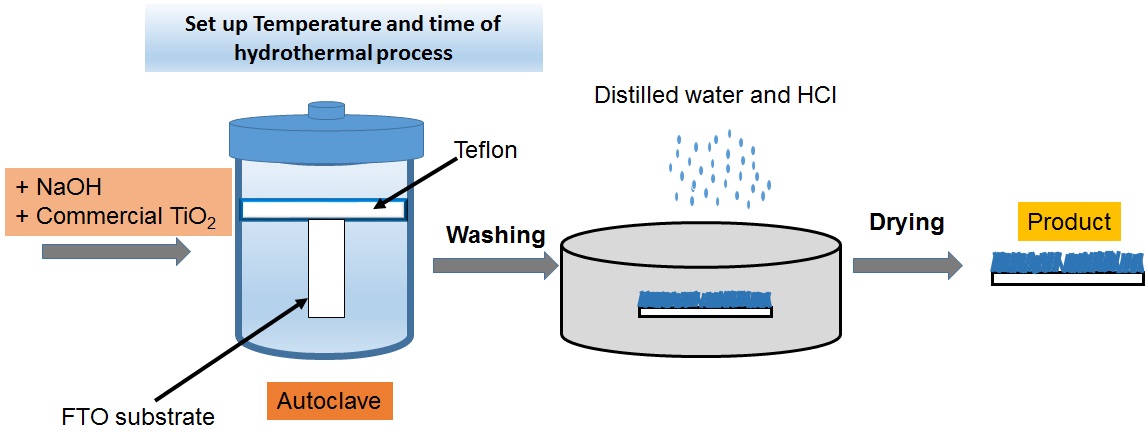 Schematic 1. Fabrication process of the TNTs film on FTO substrate via hydrothermal method.
Schematic 1. Fabrication process of the TNTs film on FTO substrate via hydrothermal method.
The size and morphology of the prepared samples were measured by Field-Emission-gun Scanning Electron Microscopy (FE-SEM, JEOL JSM-7401F) and Transmission Electron Microscopy (TEM, JEM -1400). The structures of the samples were characterized by X-ray diffraction spectroscopy (XRD, D8-ADVANCE), XRD was performed with Cu-Kα radiation (λ = 1.5418 Å).
Characteristic of gas sensing: Sensitivity of samples (S) was determined from @S = \frac{{{R_a}}}{{{R_g}}}@ (where Ra is the electrical resistance of the sensor in air, and Rg is the electrical resistance of the sensor in ethanol-air mixed gas) [23,24,25]. Besides, according to Wei-Cheng Tian et al. [24] and Ibrahim A. Al-Homoudiet al. [25], the gas sensors base TiO2 materials operating at temperatures ranging between 200 and 350 ℃. Higher sensor operation temperatures typically led to stronger and faster sensing responses.
TEM image of TNTs (Figure 1) shows that the surface morphology of samples has the entire nanotubes structure. The average diameter of tubes is about 12 nm and their length is about several hundred nanometers. Besides, our previous publication indicated that the TNTs powder samples which were synthesized by hydrothermal method at 135 ℃ for 24 hours andwere treated by acid and distilled water until the pH reached around 4 have crystallized structure with rutile phase of the (110) peak [16].
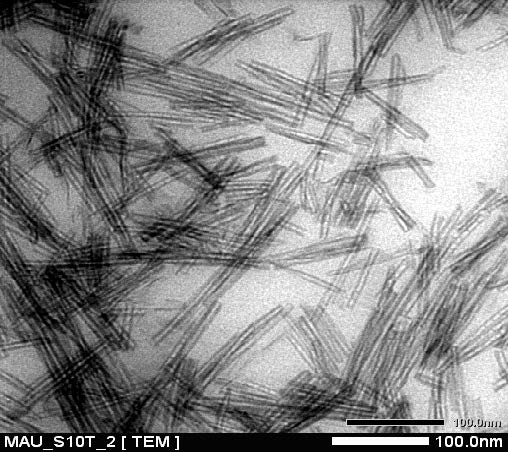 Figure 1. TEM image of TNTs powder synthesized hydrothermal.
Figure 1. TEM image of TNTs powder synthesized hydrothermal.
Figure 2a is the FE-SEM image of the TNTs coated on FTO substrates (TNTs/FTO). It shows that the morphology of samples has nanowires shape and porous structure. They have diameter from 10 to 25 nm and their length is about a few hundred nanometers. These morphologies are one of suitable parameters for the application of gas sensor [26]. The TEM image shows that the average diameter of TNTs is about 10-12 nm (Figure 2b) and is suitable with results of FE-SEM image (Figure 2a).
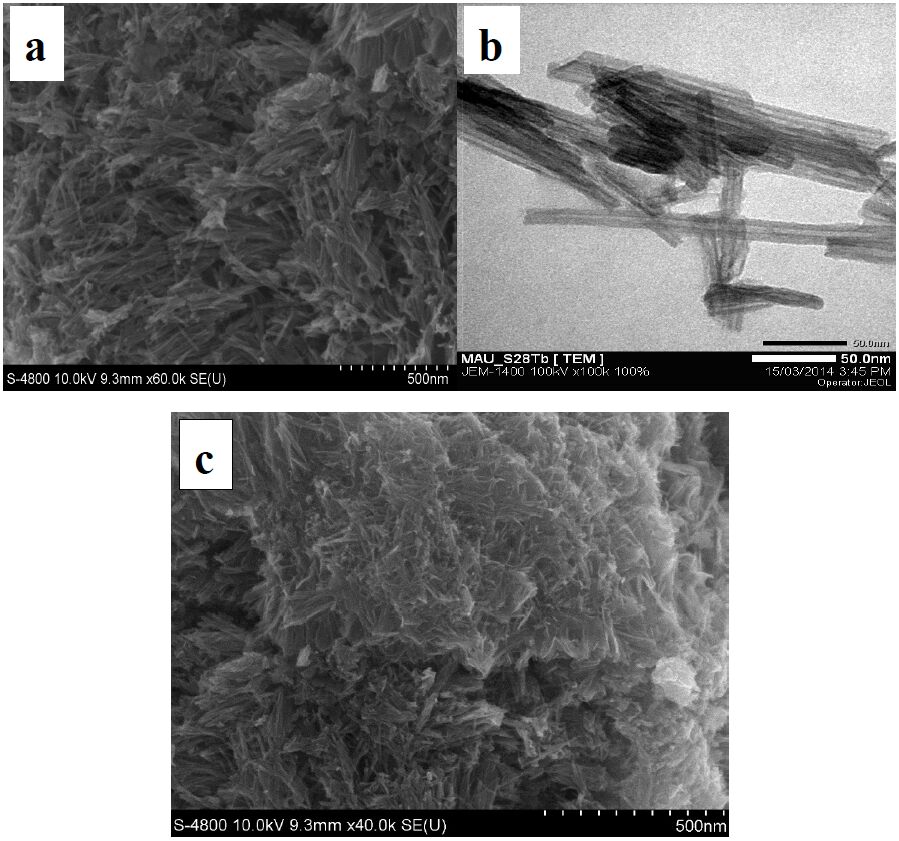 Figure 2. (a) FESEM image of TNTs/TNTs, (b) TEM image of TNTs/TNTs and (c) FESEM image of TNTs/FTO after gas sensing at 250 ℃.
Figure 2. (a) FESEM image of TNTs/TNTs, (b) TEM image of TNTs/TNTs and (c) FESEM image of TNTs/FTO after gas sensing at 250 ℃.
Both rutile TiO2 and FTO have tetragonal structure. Moreover, the lattice matching factor between FTO and rutile TiO2 is < 2%, a feature that facilitates a linear growth of the rutile phase directly from the substrate [27]. Figure 3 shows XRD patterns of FTO substrate and TNTs/FTO. When TNTs were coated FTO, the intensity of peaks had decreased and the (101) lattice plane disappeared. According to P. Soundarrajan and et al., the (110) crystallographic plane growth of rutile TiO2 has the most stable surface and the (101) plane will grow at low temperature (120 ℃) of the autoclave [28]. In this research, we synthesized TNTs at 135 ℃ in 24 hours in the autoclave. As a result, the (110) crystallographic plane grow and (101) plane disappeared.
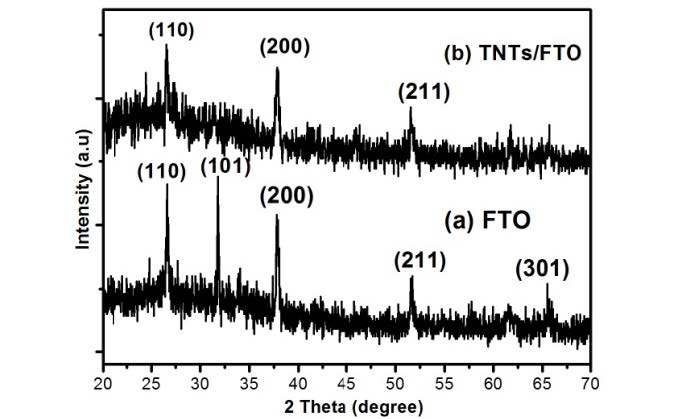 Figure 3. XRD pattern of (a) FTO substrates; (b) TNTs on FTO substrates.
Figure 3. XRD pattern of (a) FTO substrates; (b) TNTs on FTO substrates.
A model of sensor structure shows as Figure 4. Herein, we coated Ag electrodes by DC Magnetron sputtering method and investigated the ability of gas sensing of TNTs for ethanol gas at various concentrations and temperatures.
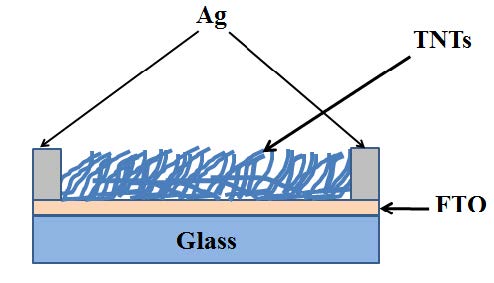 Figure 4. Schematic illustration of the gas sensor.
Figure 4. Schematic illustration of the gas sensor.
According to Sergiu P. Albu et al., the heat treatment of TNTs can also affect the nanotube morphology [29]. Usually, when TNTs extended annealing, they are stable up to 650 ℃. However, the tubes start collapsing higher temperatures (> 650 ℃). In an independent research, Odair P. Ferreira et. al. shown that the morphology of nano-tubular will convert to Na2Ti6O13 nanorods at 600 ℃ [30,31]. So, the temperature range (from 100 ℃ to 250 ℃) of surveys of gas sensing properties of TNTs will not be effected by the change of TiO2 morphology. Indeed, the surface morphology of TNTs/FTO is kept stable after survey of gas sensing at 250 ℃ (Figure 2c).
Figure 5 shows the variation of the sensitivity of sensor for various concentrations of ethanol gas (from 250 to 700 ppm) at 250 ℃. In this condition, the sensitivity increases when the concentration of gas increases. The highest sensitivity of TNTs is 2.4 at 700 ppm for the concentration of ethanol gas.
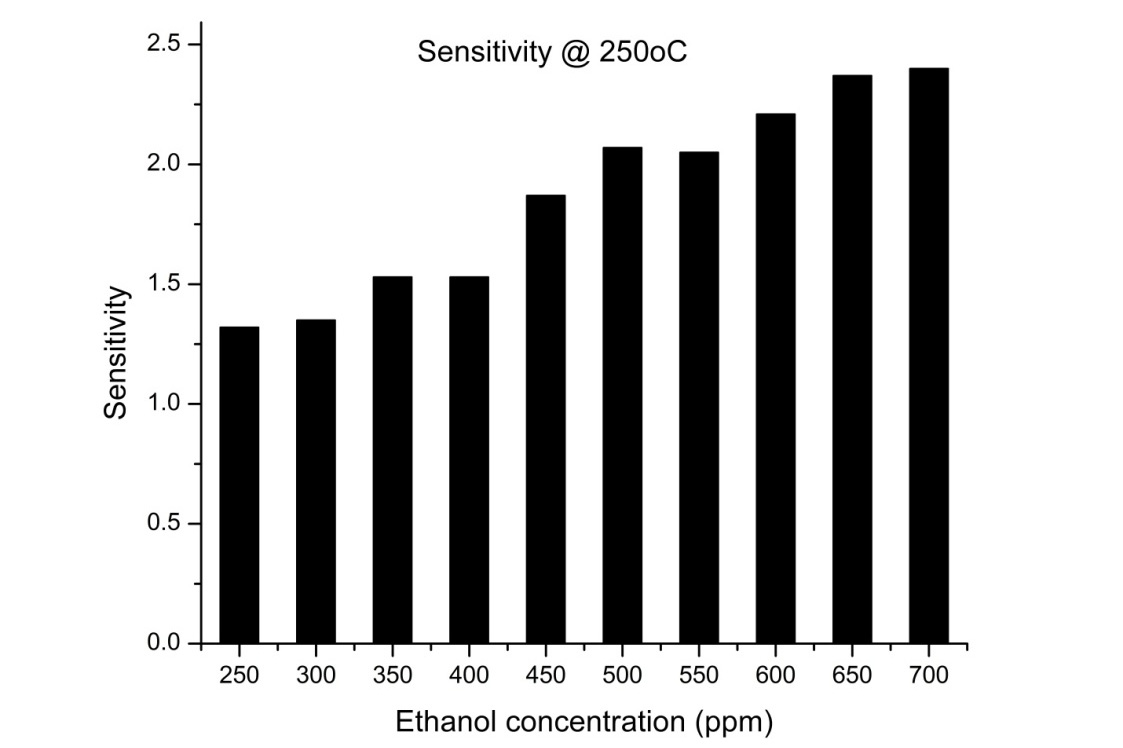 Figure 5. The graph of the sensitivity of TNTs according to various concentrations of ethanol gas at 250 ℃.
Figure 5. The graph of the sensitivity of TNTs according to various concentrations of ethanol gas at 250 ℃.
Figure 6 shows the sensitivity of TNTs according to various temperatures at 500 ppm of the concentration of the ethanol gas. When the temperature increases, the sensitivity of TNTs increases and at 250 ℃, the sensitivity is doubled compared to the sample which is determined at 100 ℃.
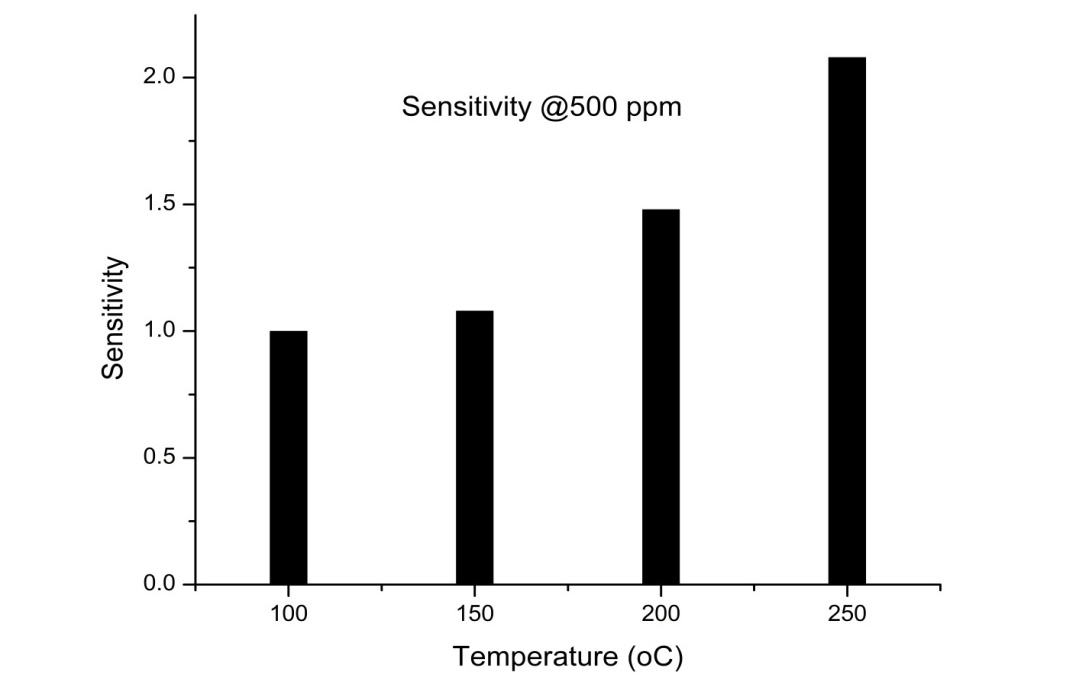 Figure 6. The graph of the sensitivity of TNTs according to various temperatures at 500 ppm of the ethanol gas concentration.
Figure 6. The graph of the sensitivity of TNTs according to various temperatures at 500 ppm of the ethanol gas concentration.
Because the ethanol gas is a reduction gas, so the mechanism of TNTs should follow the surface. Firstly, aqueous ethanol is injected into the chamber and it became gaseous. Then, they diffuse and interact with the absorption oxygen atomic on surface of TNTs and return to electron for material surface. The result leading to the conductivity of the sample increases.
This gas sensing mechanism was reported by Hongsith, et al. [23], Zeng et al. [32] According to these reports, the temperature is higher (250-350 ℃), the oxygen molecules are dissociated into oxygen ion atoms with negative electric charges as shown in Eq.(1)
| ½ O2 + e - → O - | (1) |
Then, the oxygen ions on the surface of TNTs are active with the ethanol molecules and give up the electrons from the surface back to the conduction band of the material as shown in Eq.(2)
| C2H5OH + O - → CH3CHO + H2O + e - | (2) |
These cause make the conductivity of materials increase. So the resistance of the sensor decrease.
We have successfully synthesized TNTs/FTO by a one-step hydrothermal method. Results show that the morphology of samples has nanotubes shape and porous structure. The average diameter of TNTs is about 10-12 nm and their length is about a few hundred nanometers. The sensitivity increases when the gas concentration increases and developing the same temperature of gas sensing.
The authors would like to acknowledge to record their gratitude to Administrator Boards of University of Science, Vietnam National University Ho Chi Minh City and Ho Chi Minh City University of Technology (HUTECH) for supporting facilities. This research is funded by Vietnam National University Ho Chi Minh City (VNU-HCM) under grant number C2014-18-14.
Authors declare that there is not conflict of interest.
| 1. | Jai Prakash, Shuhui Sun, Hendrik C. Swart, Raju Kumar Gupta, Noble metals-TiO2 nanocomposites: From fundamental mechanisms to photocatalysis, surface enhanced Raman scattering and antibacterial applications, 2018, 11, 23529407, 82, 10.1016/j.apmt.2018.02.002 | |
| 2. | Ozioma U. Akakuru, Zubair M. Iqbal, Aiguo Wu, 2020, 9783527347247, 1, 10.1002/9783527825431.ch1 | |
| 3. | Pham Van Viet, Truong Tan Sang, Nguyen Quoc Hien, Cao Minh Thi, Le Van Hieu, Synthesis of a silver/TiO2 nanotube nanocomposite by gamma irradiation for enhanced photocatalytic activity under sunlight, 2018, 429, 0168583X, 14, 10.1016/j.nimb.2018.05.023 | |
| 4. | Gang Li, Xin Zhang, Huan Lu, Chao Yan, Kaixin Chen, Hongbing Lu, Jianzhi Gao, Zhibo Yang, Gangqiang Zhu, Chunlan Wang, Ze He, Ethanol sensing properties and reduced sensor resistance using porous Nb2O5-TiO2 n-n junction nanofibers, 2019, 283, 09254005, 602, 10.1016/j.snb.2018.12.074 | |
| 5. | Ahmed Esmail Shalan, Ahmed Mourtada Elseman, Mohamed Mohamed Rashad, 2018, Chapter 18, 978-1-78923-326-1, 10.5772/intechopen.72494 | |
| 6. | Vaidhegi Kugarajah, Sangeetha Dharmalingam, Investigation of a cation exchange membrane comprising Sulphonated Poly Ether Ether Ketone and Sulphonated Titanium Nanotubes in Microbial Fuel Cell and preliminary insights on microbial adhesion, 2020, 398, 13858947, 125558, 10.1016/j.cej.2020.125558 | |
| 7. | Vijayakumar Elumalai, Thirunavukarasu Deenadhayalan, A. Kathleen Asitha, David Joel Kirubhakaran, Dharmalingam Sangeetha, Preparation of tungstic acid functionalized titanium oxide nanotubes and its effect on proton exchange membrane fuel cell, 2019, 1, 2523-3963, 10.1007/s42452-019-0358-y | |
| 8. | Jai Prakash, Fundamentals and applications of recyclable SERS substrates, 2019, 38, 0144-235X, 201, 10.1080/0144235X.2019.1660114 | |
| 9. | Felix Swamidoss Victor, Vaidhegi Kugarajah, Mohan Bangaru, Shivendu Ranjan, Sangeetha Dharmalingam, Electrospun nanofibers of polyvinylidene fluoride incorporated with titanium nanotubes for purifying air with bacterial contamination, 2021, 0944-1344, 10.1007/s11356-021-13202-3 | |
| 10. | Tripti Ahuja, Jai Prakash, 2023, 9780323994545, 379, 10.1016/B978-0-323-99454-5.00011-1 | |
| 11. | P.N. Wani, S.K. Kale, S.S. Dahiwale, Umesh T. Nakate, S.U. Ekar, Yogesh T. Nakate, P.S. More, M.T. Sarode, Y.B. Khollam, Ion beam irradiation: Novel approach for preparation of Ag coated N doped nanocrystalline anatase TiO2 films, 2023, 288, 09215107, 116212, 10.1016/j.mseb.2022.116212 | |
| 12. | Nanda Kumar Reddy Nallabala, S. Kaleemulla, M. Ramprasad Reddy, Adel El-marghany, N. Ravi, Sangaraju Sambasivam, M. Chandra Sekhar, P. Rosaiah, Sunil Singh Kushvaha, V. Kalaivani, Muthukonda Venkatakrishnan Shankar, Vasudeva Reddy Minnam Reddy, Highly Performing MSM Type Ag/n-titanium Dioxide Nanotubes/p-Si Heterojunction Based Ultraviolet-A Photodetectors, 2024, 16, 1876-990X, 2815, 10.1007/s12633-024-02877-1 |